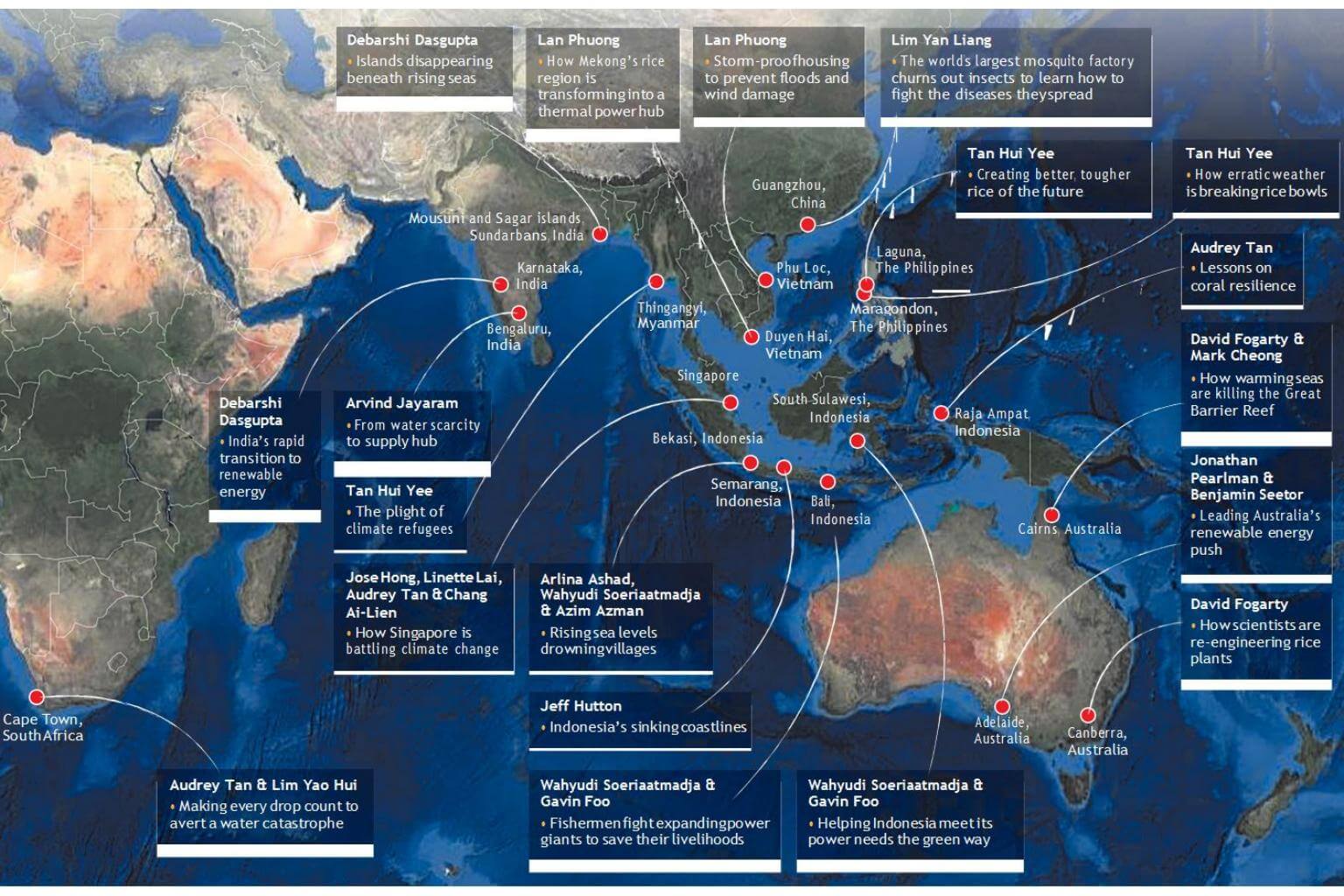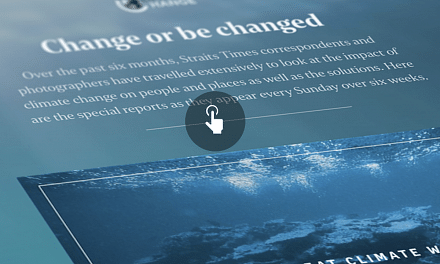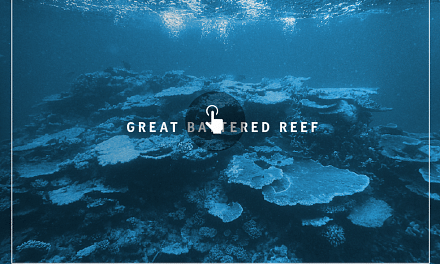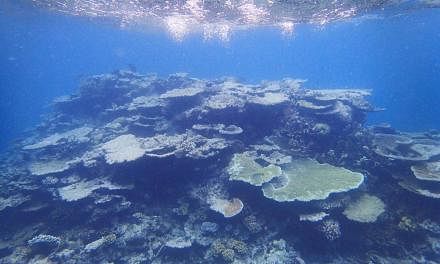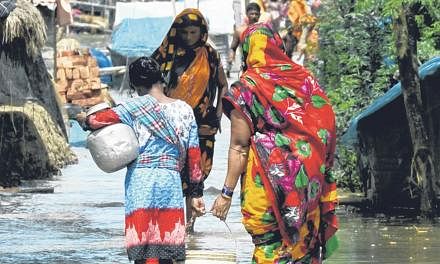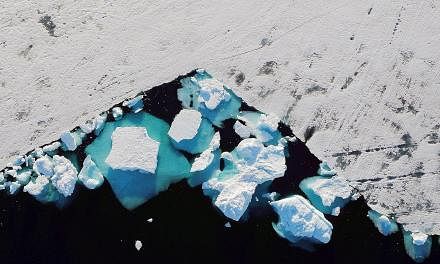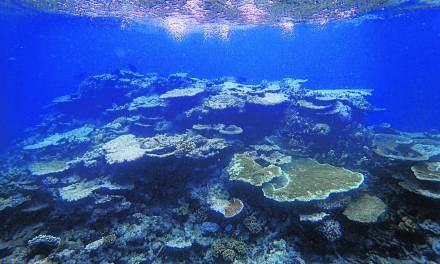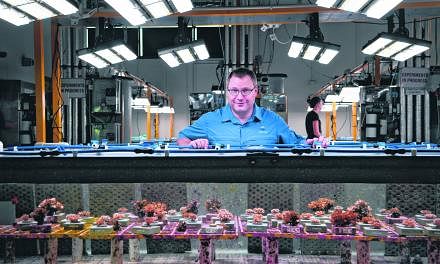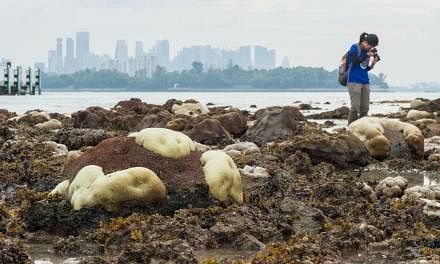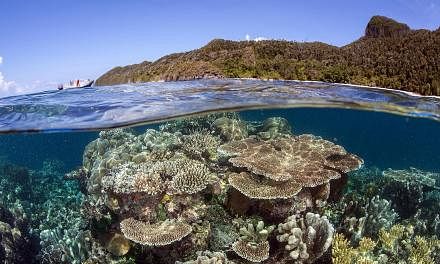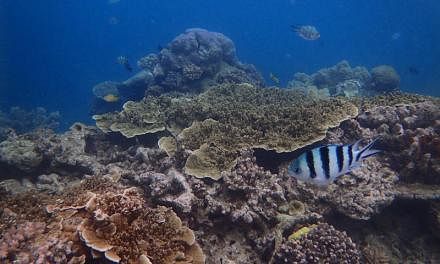Climate change is here and now. It is killing coral reefs, devouring crops, drying up water supplies, spreading disease and wreaking havoc on the weather.
On the heels of the latest Intergovernmental Panel on Climate Change (IPCC) report and Sunday's Insight, The Sunday Times is running a series of six multimedia packages each week on global warming around the world, with a special focus on Asia.
Here is a look at what to expect from next week:
1. A REEF IN PERIL
Coral reefs are among the most diverse, complex and vital ecosystems on the planet, and they're in big trouble, according to the first package in the series. Take the Great Barrier Reef. It is struggling to cope with seas that are getting warmer and more acidic.
Its plight is cause for everyone to sit up and take notice, as it is the world's largest living structure - and hence, its sensitivity to environmental changes is a warning of how other creatures and habitats are being damaged.
Some scientists say that if we are not already in the midst of the sixth mass extinction, it is coming. But declines can be reversed, as research into coral bleaching - when corals evict the algae that help them survive - shows.
2. WHEN TAPS RUN DRY
Countries around the world are bracing themselves for water shortages, as the rise in freak weather conditions leads to more droughts. Nowhere is this more apparent than in South Africa's Cape Town, where citizens made drastic changes to their lifestyle and water usage habits to push back "Day Zero", when the city "will have to turn off all taps".

The water crisis is a wake-up call for all, though. Over in the southern Indian city of Bengaluru, for instance, efforts are being made to transform it from a city dependent on others for its water into a supply hub for surrounding districts.
This involves laying water and sewage networks and building sewage treatment plants to tackle pollution of water sources such as the city's lakes.
3. CLIMATE REFUGEES

Every night, Indonesian housewife Karnah is terrified she will be swept out to sea. Many of her neighbours fled when rising seas engulfed their homes and fish ponds in Pantai Bahagia village just outside Jakarta.
Over in the Thingangyi village on the Myanmar coast, fisherman Thet Naing Tun's bamboo home has already been moved inland twice - once when the sand under it disappeared into the sea, and the second time when the storms got so strong they threatened to destroy the hut.
Countries are facing increased risks as the sea-level rise accelerates. And nowhere is the threat more evident than South-east Asia, where densely populated and low-lying coastal plains make millions vulnerable to storm surges, coastal erosion and flooding.
4. BREAKING RICE BOWLS

Asia is the world's rice bowl, but increasingly unpredictable weather is choking a once-bountiful harvest. With the staple that feeds more than half the world under threat, farmers are forced to adapt.
Farmer Bernado Pelayo, for one, who grows rice in the village of Maragondon in the Philippines, is experimenting with seven varieties of rice, as well as other produce like cassava, banana and coconut, in the hope he won't go hungry if one crop fails.
Meanwhile, scientists have ambitious plans to produce super rice. At the International Rice Research Institute in Laguna, Philippines, experiments on rice varieties and traits hope to produce crops able to withstand environmental stresses - like high heat, flood and drought - and still be able to maintain high enough yields.
5. MOZZIE ATTACK

The world's deadliest creature is getting deadlier. Places once devoid of mosquitoes have seen the appearance of the blood-sucking insects as the planet warms, spreading deadly infectious diseases such as dengue and malaria. But researchers are bringing the fight back to the mosquito.
As an alternative to traditional control measures such as fogging, for instance, they have transferred the bacteria Wolbachia into the Aedes aegypti mosquito which is then released into wild populations, where it can block the transmission of dengue and Zika viruses.
6. GREEN VS BLACK
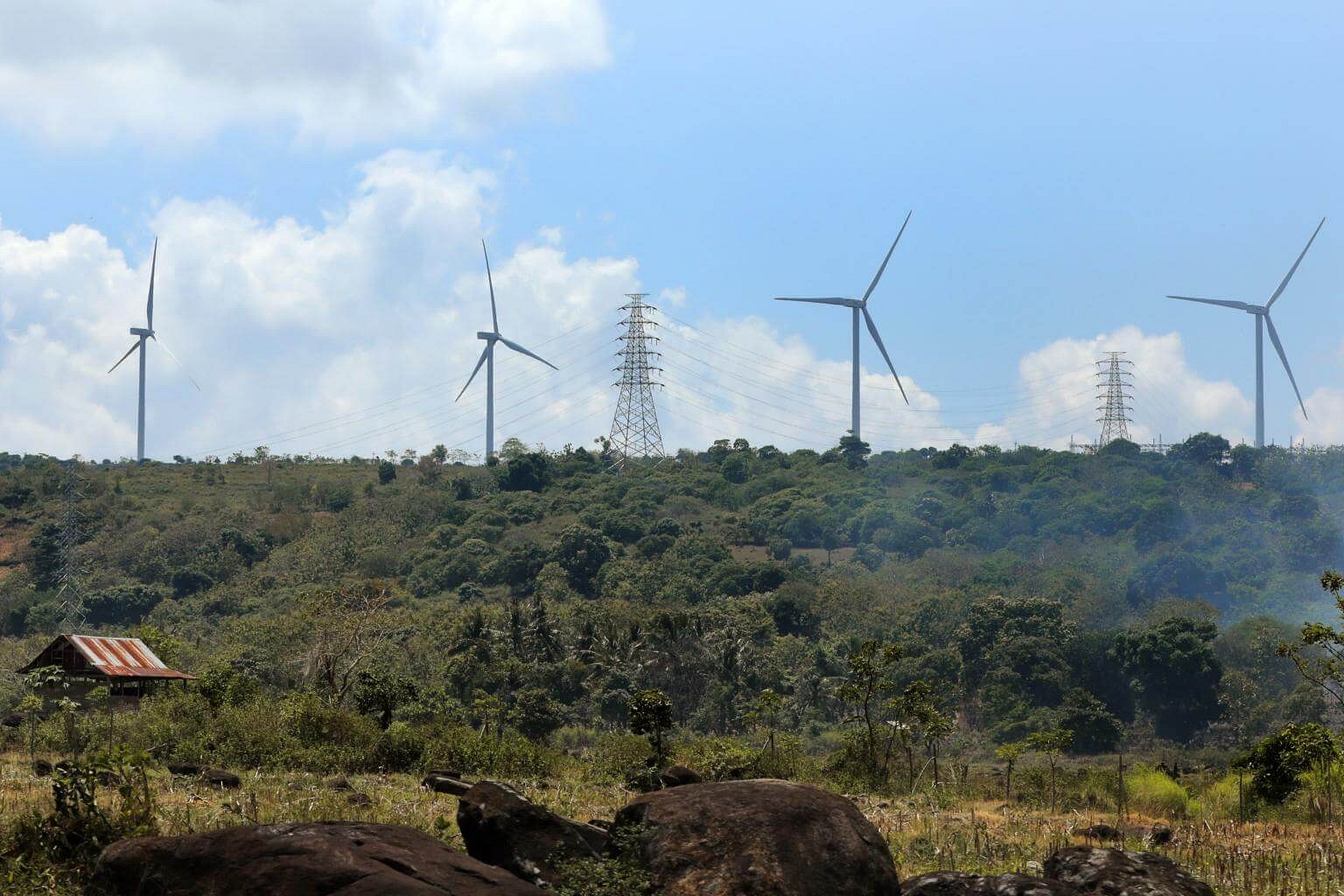
Mrs Nguyen Thi Thu lives in Vietnam's Tra Vinh province, and her house is opposite a coal-fired power plant. In the windy season, ash, coal slag and dust fill the air, she laments. But across the region, a shift is slowly being made towards green energy.
In Indonesia, for instance, coal has been a major focus, but geothermal, hydro and, more recently, wind and solar projects have been built as well. At Parepare, a sleepy fishing town in South Sulawesi province, the nation's first wind farm has been supplying energy to homes and industries for some months, and there are plans to expand.
